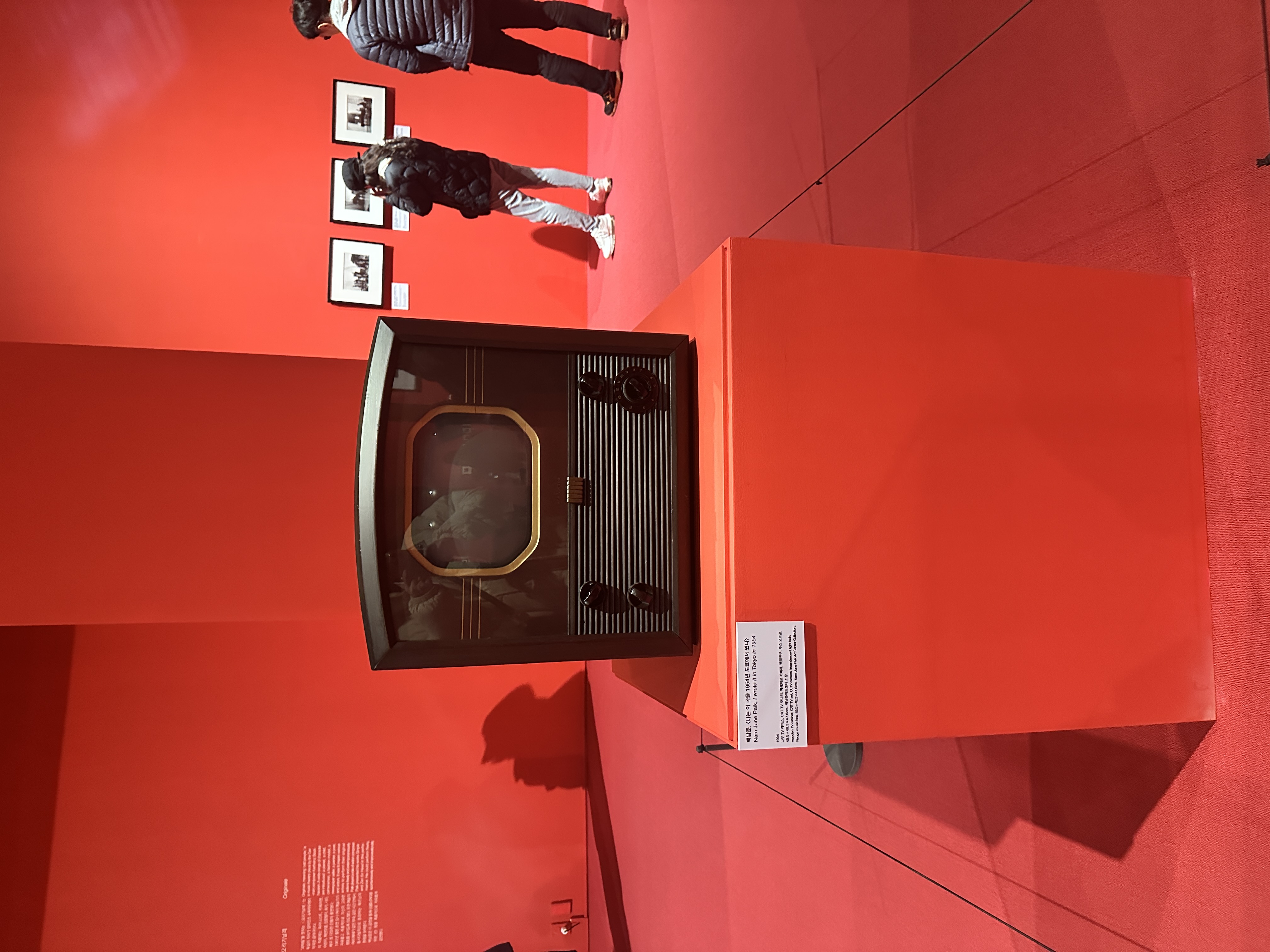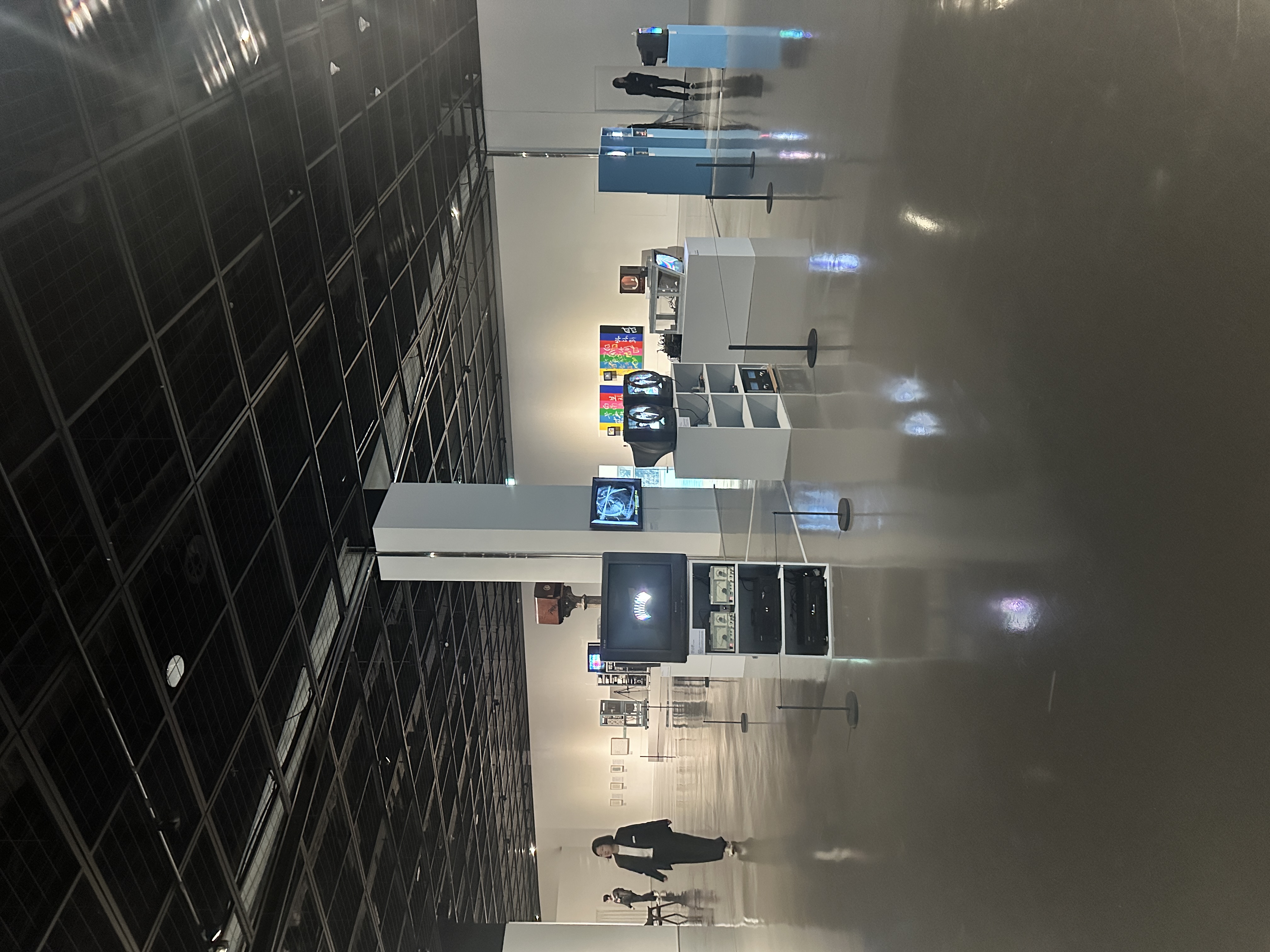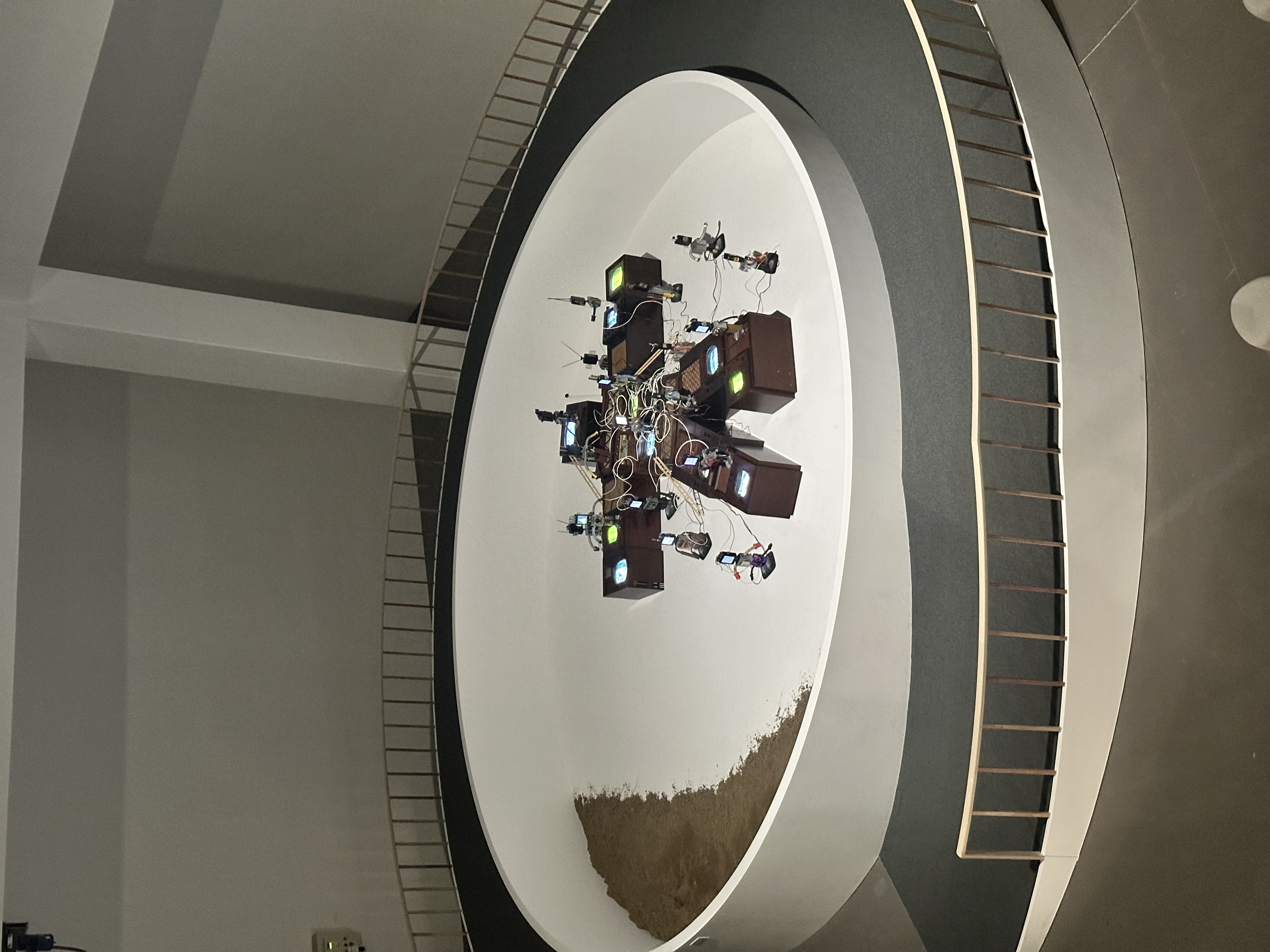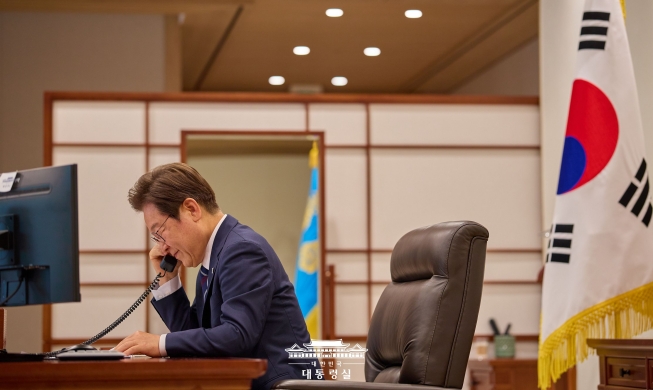- 한국어
- English
- 日本語
- 中文
- العربية
- Español
- Français
- Deutsch
- Pусский
- Tiếng Việt
- Indonesian
By Honorary Reporter Gloria Liew from Singapore
Photos = Gloria Liew
The retrospective exhibition "Nam June Paik, Nam June Paik, and Nam June Paik" runs through March 16 at the Busan Museum of Contemporary Art (MOCA), showing key works by the video art pioneer from the 1960s to the early 2000s.
Jointly hosted by the Nam June Paik Art Center and Busan MOCA, the display features several of his most famous creations include "TV Buddha" (1974), "Participation TV" (1998) and "Radio Man" (1987).

"I wrote it in Toyko in 1954," one of the art pieces that is on display
Opened in June 2018, Busan MOCA is located on Eulsukdo Island. The exterior of the museum was designed to blend with the vibe of the island, known for its diversity of birds and reeds.
Busan residents can see most of the exhibitions for free, with others requiring paid admission. The museum hosts many exhibitions, displays of contemporary art collections and academic conferences.

Nam June Paik was best known for utilizing television monitors when creating massive sculptural installations.
This was my first time seeing TV monitors used for such works at a museum.

The motif of "Gulliver"
msjeon22@korea.kr
*This article is written by a Korea.net Honorary Reporter. Our group of Honorary Reporters are from all around the world, and they share with Korea.net their love and passion for all things Korean.
